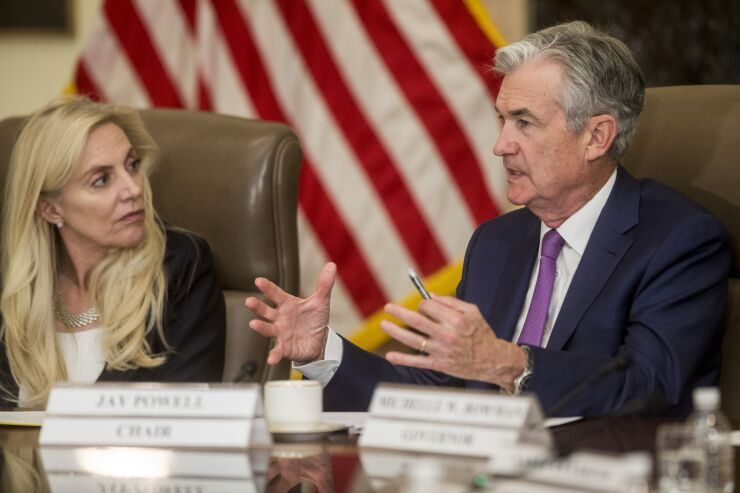The Federal Reserve is closing in on the launch of its real-time payment settlement system, which is meant to be a much-needed update to the antiquated check clearing system. Whether it was worth the wait remains to be seen.
Federal Reserve Vice Chair Lael Brainard had a simple message Monday to relay to the banking industry: FedNow, the central bank's faster payments settlement network,
This is good news on its face. The Fed has spent

Of course, The Clearing House — a consortium of the country's largest banks — had already entered the field in 2017 with its RTP Network. The introduction of a competing real-time payments system run by the Fed would give banks — particularly smaller banks — a choice in which operator to use, mimicking the interchangeable operation of public and private settlement services on the ACH system. If it worked then, it should work now, right?
The debate over whether the Fed should be building its own faster payment rails is, at least in part, a proxy fight between large and small banks. Small banks don't want to be beholden, even indirectly, to their larger competitors for something as critical to their business as payment settlement. And as a general matter, monopolies only really make sense in certain circumstances —
The counterpoint to that perspective is that RTP was already in existence five years ago, and if the Fed had simply named it as the solution to faster payments, the industry would likely have gotten in line, albeit grudgingly. By anointing RTP as the coin of the faster-payments realm the Fed would not have renounced its ability to regulate RTP; it just wouldn't be competing with it head to head.
I don't have a dog in that fight, and at any rate it's a moot point — FedNow is coming sometime in the second quarter of 2023, and that reality will have to sink in for better or worse. I suspect that over time FedNow and RTP will find a way to coexist, so long as the rather thorny
But the Fed is also
Sounds great, but here again there is a diversity of opinion about whether such a system is warranted or even desirable.
Co-opting cryptocurrency and blockchain technology makes sense on some level. Despite the recent tumult in the crypto markets and spectacular failures of some stablecoins, cryptocurrencies
On the other hand, if China was going to jump off a bridge, would you do it, too? Some of the most compelling theoretical benefits of a CBDC are greater surveillance of spending — which would make anti-money-laundering efforts vastly simpler — and faster payments. As many
FedNow is coming next year — that battle is over. But if the Fed also wants to pursue a digital currency, it will have to be very deliberate and explicit about how a CBDC






